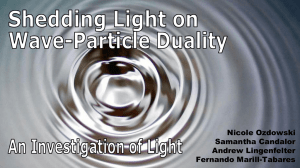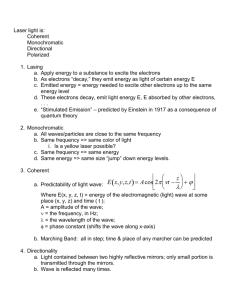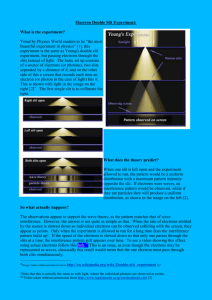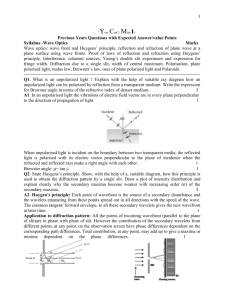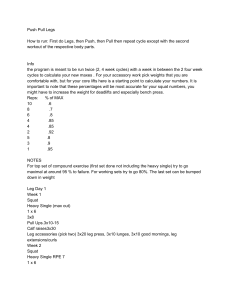PH HY 1033 Fall 2010
advertisement
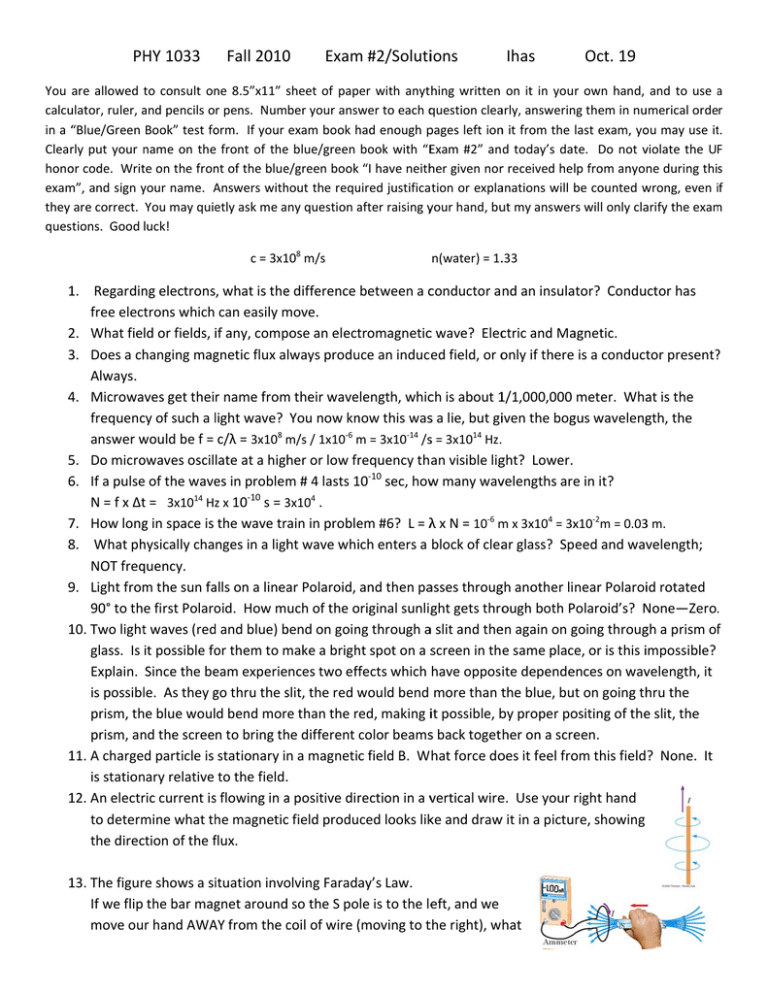
PH HY 1033 Fall 2010 0 Exam m #2/Solutiions Ihas Oct. 19 You are allowed to consult on ne 8.5”x11” sheet s of paper with anyt hing written on it in your own hand, and to use a a calcu ulator, ruler, aand pencils or pens. Number your answ wer to each qquestion cleaarly, answerin ng them in nu umerical order in a ““Blue/Green Book” test fo orm. If your exam book h had enough ppages left ion n it from the last exam, yo ou may use itt. Clearrly put your name n on the e front of the e blue/green book with “EExam #2” and today’s datte. Do not vviolate the UF hono or code. Writte on the fron nt of the blue e/green book “I have neithher given norr received help from anyone during this exam m”, and sign yyour name. A Answers with hout the requ uired justifica tion or explaanations will be counted w wrong, even iif they are correct. You may quie etly ask me any question aafter raising yyour hand, bu ut my answerrs will only claarify the exam m questions. Good luck! 108 m/s c = 3x1 n(water) = 1..33 1 1. Regardin ng electrons, what is the e difference between a cconductor and an insulaator? Condu uctor has free electrons which can easily m move. 2 2. What field or fields, iif any, comp pose an electtromagneticc wave? Elecctric and Maagnetic. 3 3. Does a ch hanging maggnetic flux always produ uce an induc ed field, or o only if there is a conductor present? ? Always. 4 4. Microwaves get their name from m their wavelength, whicch is about 11/1,000,000 meter. Whaat is the frequenccy of such a llight wave? You now kn now this wass a lie, but giiven the boggus wavelenggth, the 8 ‐6 answer w would be f = c/λ = 3x10 m m/s / 1x10 m m = 3x10‐14 /ss = 3x1014 Hz. 5 5. Do micro owaves oscillate at a high her or low frrequency th an visible ligght? Lower. 6 6. If a pulse e of the wave es in problem m # 4 lasts 1 10‐10 sec, how w many wavvelengths aree in it? ‐10 14 4 N = f x Δtt = 3x10 Hzz x 10 s = 3x10 3 . 7 7. How longg in space is the wave train in proble em #6? L = λλ x N = 10‐6 m m x 3x104 = 3xx10‐2m = 0.03 3 m. 8 8. What ph hysically changes in a ligh ht wave whiich enters a block of cleaar glass? Sp peed and wavelength; NOT freq quency. 9 9. Light from m the sun faalls on a lineaar Polaroid, and then paasses througgh another linear Polaroiid rotated 90° to the first Polaro oid. How much of the o original sunligght gets thro ough both P Polaroid’s? N None—Zero. 1 10. Two lightt waves (red d and blue) b bend on goin ng through aa slit and theen again on ggoing througgh a prism off glass. Is it possible fo or them to m make a brigh ht spot on a sscreen in the same place, or is this iimpossible? Explain. Since the be eam experiences two efffects which have opposiite dependeences on wavvelength, it would bend more than tthe blue, but on going th hru the is possiblle. As they ggo thru the sslit, the red w prism, th he blue would bend more than the red, making iit possible, b by proper po ositing of thee slit, the prism, an nd the screen to bring th he different color beamss back together on a screeen. 1 11. A charged particle is stationary in a magneticc field B. W hat force do oes it feel fro om this field? None. It is station nary relative to the field.. 1 12. An electrric current iss flowing in aa positive dirrection in a vvertical wiree. Use your right hand to determ mine what th he magneticc field produced looks likke and draw w it in a picture, showing the direcction of the fflux. 1 13. The figurre shows a siituation invo olving Faradaay’s Law. If we flip the bar maggnet around d so the S pole is to the leeft, and we move our hand AWA AY from the ccoil of wire ((moving to tthe right), what else, if anything, will change in the picture and why? Nothing else changes, since the CHANGE in flux will be the same. 14. What is Brewster’s angle for light reflection off a clear lake? tanӨ = n = 1.33 so Ө = Inverse (tan 1.33) = 53° 15. Which pole of the Earth’s magnet is near the north geographic pole? South. 16. Why does putting two polarizers oriented at right angles to each other in front of each slit in Young’s interference experiment prevent the interference pattern from being seen? Each slit then passes light of opposite polarization, which means the light from each slit is coming from different atoms. Only a single photon, coming from one atom, can interfere with itself—only then is there coherence. 17. When electrical charges move in solid substances they are usually electrons? The following 2 questions (#18 & #19) refer to a hollow metal (conducting) spherical shell which has a net negative electrical charge: 18. What is the electric field configuration INSIDE the shell (draw a picture if you like). Zero—no field inside a conductor. 19. What is the electric field configuration OUTSIDE the shell (draw a picture if you like). Radial pointing towards the center of the sphere. 20. Does a changing magnetic flux produce an electric current if there is no conductor present? Explain. No, there must be an electrically conducting circuit to carry the flow of electrons.

